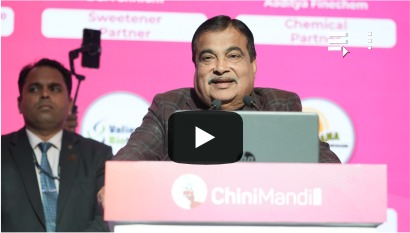The Grain Ethanol Manufacturers Association (GEMA) said that despite the Indian government’s push for ethanol blending and self-reliance in fuel sourcing, a serious imbalance in the ethanol procurement process is threatening the viability of hundreds of existing distilleries. Based on the latest Ethanol Supply Year (ESY) 2025–26 tender (#1000442332), industry stakeholders are raising concerns about the allocation methodology adopted, which attracts new capacities in deficit zones while sidelining operational units with surplus capacity.
Deficit zones prioritised, surplus ignored
The Association said that, as per page 10 of the tender document under “Allocation Methodology & Criteria,” the rule states:
“The zones where the offers from the distilleries located within the zone are less than the requirement of that zone, this has been considered as the deficit zone. For these zones, offers from the vendors shall be considered in full for allocation.”
Dr C K Jain, President of GEMA, said, “While the policy appears to support local sourcing in deficit areas, it effectively ignores surplus capacity promoted by OMCs in neighbouring states. The allocation methodology takes no cognisance of distilleries that were established with understandings such as Long-Term Offtake Agreements (LTOA) and Expression of Interest (EOI-1)— or of those set up independently without any understanding with OMCs”.
Creating an artificial surplus – Over 350 units deprived of orders
Published allocations indicate that at least 350 distilleries are deprived of adequate purchase orders from Oil Marketing Companies (OMCs). Many of these units were established in collaboration with OMCs or were part of earlier policy initiatives. Yet, they find themselves idled and financially strained, as newer opportunity is attracted in so-called “deficit” zones.
Jain said that this situation has sparked frustration among existing distilleries that invested heavily based on the promise of consistent government demand under the Ethanol Blended Petrol (EBP) program.
Original goals now in question
The ethanol program was originally designed to address regional deficits by promoting localised ethanol production, reducing transport costs, and supporting farmers through sugarcane and grain procurement. The Association said that, however, in practice, the methodology now being implemented is creating an artificial surplus in some states and a flood of new capacity in others—compromising the original objective of balanced and efficient supply fulfilment.
Industry’s call for a rethink
The industry body said that stakeholders across the sector are now questioning the allocation mechanism. The current approach is not only economically inefficient but also environmentally counterintuitive, as it promotes the creation of redundant capacity while neglecting existing infrastructure.
Jain added that “A more holistic procurement model is needed—one that considers surplus availability across states, pre-existing capacities and investments, prior understandings and commitments made with distilleries”.
India’s ethanol blending mission has made significant strides in recent years, but its success hinges on equitable and strategic allocation of demand. GEMA said that ignoring operational surplus units while encouraging new investments in deficit zones will only distort the market and undermine the long-term sustainability of the ethanol ecosystem.
“To ensure fair participation and optimal resource utilisation, OMCs and policymakers must take a closer look at current criteria and act swiftly to correct course,” Jain concluded.



















[…] Source : Chinimandi […]